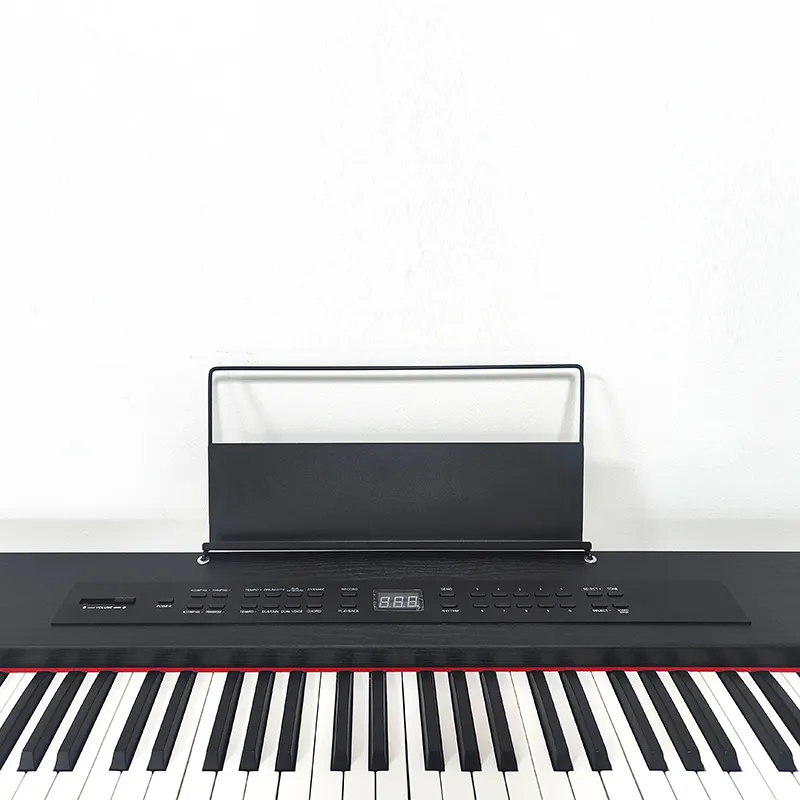In the evolving world of music education, technology continues to bridge the gap between tradition and innovation. Music schools, once reliant solely on large, stationary instruments, are now embracing more flexible solutions to meet the needs of modern students and instructors. One such innovation making waves is the Folding Digital Piano. Lightweight, compact, and packed with features, folding digital pianos are transforming how music is taught and practiced. Their convenience, affordability, and adaptability are proving instrumental in classrooms, practice rooms, and even remote learning setups.
Traditional acoustic pianos and even full-size digital models often occupy significant floor space. Folding digital pianos provide an ideal alternative, allowing music schools to set up and rearrange learning environments quickly and efficiently. When not in use, these instruments can be folded and stored away, freeing up space for other activities or classes.
Folding digital pianos make it easier to conduct group lessons. Instructors can provide each student with their own instrument without overcrowding the room. The uniformity of features across different folding digital pianos ensures consistent learning experiences and simplifies instruction.
The portability of folding digital pianos allows students to take their instruments home or move between practice locations effortlessly. This ease of transport encourages more frequent and effective practice sessions. Since consistent practice is essential for musical progress, this feature directly benefits student development.
Folding digital pianos are designed to accommodate beginners and advanced players alike. With full-size keys and velocity sensitivity, they offer a realistic playing experience. Advanced features such as metronomes, recording functions, and accompaniment tools support learning at various stages.
With online lessons becoming increasingly common, the demand for mobile and flexible instruments has risen. Folding digital pianos align perfectly with this trend. Students can easily participate in virtual classes without compromising the quality of their instrument or sound. The compact design ensures compatibility with limited home spaces.
Modern folding digital pianos are often equipped with USB or Bluetooth connectivity, enabling integration with music education software and apps. This expands the learning ecosystem, offering access to digital sheet music, interactive lessons, and progress tracking. Music schools can utilize these features to enrich their curriculum.
Despite their compact size, folding digital pianos often feature 88 full-size keys. This maintains the tactile experience students need for developing proper finger techniques. The folding mechanism is engineered to protect the keys during transport, ensuring durability and reliability.
Most folding digital pianos come with built-in speakers, headphone jacks, and MIDI output. These features provide a comprehensive setup for both solo practice and group instruction. Whether connected to external speakers or used silently with headphones, these pianos adapt to different learning environments.
Budget constraints are a common concern for educational institutions. Folding digital pianos present a cost-effective solution by combining quality and affordability. They often come at a fraction of the price of traditional digital pianos while offering similar core functionalities.
Unlike acoustic pianos, folding digital pianos do not require regular tuning or climate control. This drastically reduces maintenance costs and effort. Schools benefit from long-term savings while still providing students with reliable instruments.

Music schools involved in community outreach or mobile education initiatives find folding digital pianos particularly useful. Their portability allows instructors to bring instruments to off-site locations, making music education more accessible.
Folding digital pianos are suitable for teaching classical, jazz, pop, and contemporary styles. Their versatility supports various instructional approaches, from traditional notation to improvisation and composition. This adaptability aligns with the diverse goals of music education programs.
Folding digital pianos empower students to explore music independently. With built-in learning modes and connectivity to tutorial apps, students can practice and learn new material at their own pace. This promotes autonomy and boosts confidence.
Compact and easy to transport, folding digital pianos are perfect for recitals, talent shows, and small performances. Students can showcase their skills without the logistical challenges of moving heavy instruments. This accessibility encourages greater participation in school events.
Many folding digital pianos are made with sustainable materials and designed for energy efficiency. Their electronic components consume less power than larger digital models, aligning with eco-conscious institutional values.
In addition to functional benefits, folding digital pianos feature sleek, modern designs that appeal to both students and educators. Their minimalistic appearance blends well with various classroom settings, contributing to a professional and engaging learning environment.
As technology advances, folding digital pianos continue to evolve. New models introduce improved key actions, enhanced sound engines, and AI-based feedback systems. These innovations keep students engaged and ensure that the instrument keeps pace with pedagogical developments.
Folding digital pianos are built to be compatible with upcoming educational tools and software. This future-ready approach ensures that schools investing in these instruments are prepared for the next wave of digital learning.
Folding digital pianos are designed to be lightweight and compact, making them easy to transport and store. While they retain full-size keys and essential features, they are more portable than traditional digital pianos.
Yes, many folding digital pianos offer high-quality sound and key action that make them suitable for small performances, rehearsals, and even studio work. However, they are typically best suited for practice and educational purposes.
Modern folding digital pianos are built with durability in mind. They are designed to withstand frequent transport and daily use in classroom settings. Proper handling and storage further extend their lifespan.
Most folding digital pianos include Bluetooth or USB connectivity, allowing them to work seamlessly with a wide range of music education apps. This enhances the learning experience by providing interactive tools and feedback.